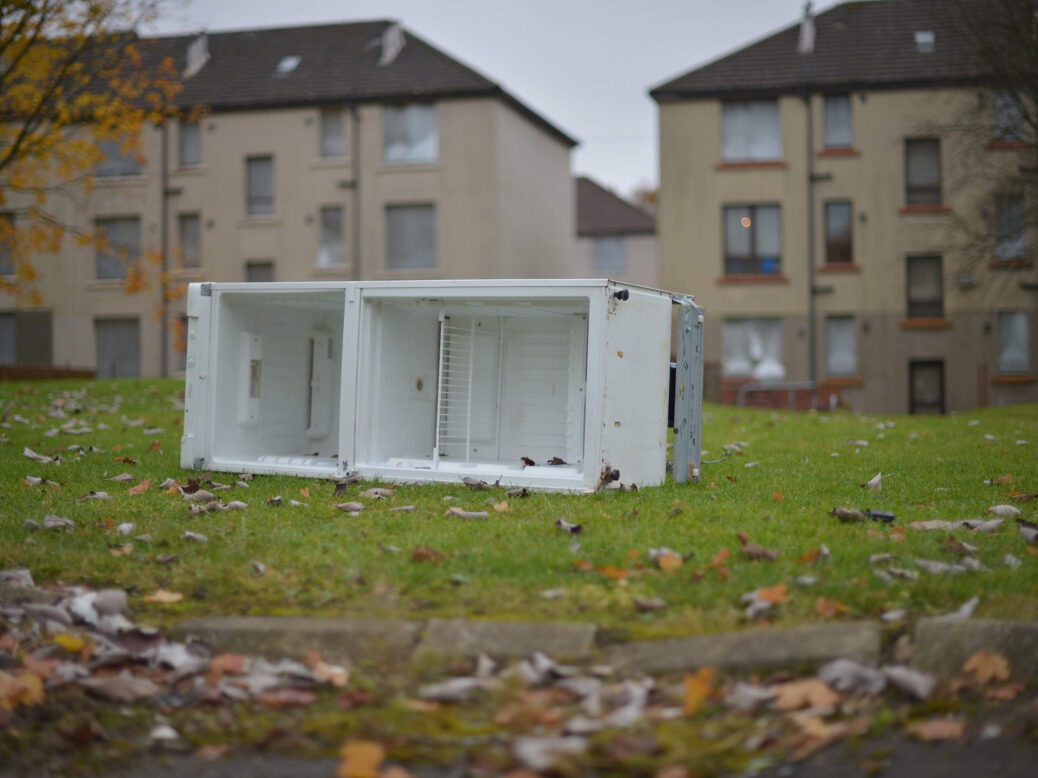
Today’s climatic end to the Scottish independence referendum was out of sight in the corridors of Westminster apparently. It was never meant to be so exciting. Speculation over the economic risks, daubed “Project Fear” by the Yes campaign, whilst popular amongst Better Together supporters, has failed to traction with those aware of how bad things already are. Since last week, the panicked responses of politicians and seasoned pundits have only fanned the flames of the Yes movement.
A spectacular mix of parody and mishap led to the tipping of the polls last week, which in turn gave momentum to the Yes campaign. “They can’t run a campaign, how can they run a country?” was the refrain of one No-turned-Yes voter I met. Then came the news that record numbers of new voters had registered, followed by more panic, and, apparently, fear of the correlation between rise in voter registration and the rise of Yes.
Since 2012, there have been over 300,000 new voter registrations, leading to 97 per cent of population registered overall, with over 80 per cent expected to turn out. That’s a significant shift from May 2014 when 33.5 per cent of the Scottish population voted in the European elections. Even for the 2010 Westminster election, voter turn-out in Scotland was only 63.8 per cent, dipping to 50.4 per cent the following year for elections to Holyrood.
But is it true that the rise of Yes is the rise of the poor? Does Better Together’s panicked response to news of record numbers of voters registering belie a deeper malaise in the organs of UK democracy? That of voting apathy amongst the poor, and, moreover, complacency amongst those who thought the poor might not vote, that they might not even register to vote.
The latest YouGov poll on the Scottish independence referendum released last night offers few if any insights into the demographics behind the recent surge in electoral registration: 49 per cent of those classed as unskilled manual labourers or out of the job market (YouGov social grade C2DE) would vote Yes, 45 per cent would vote No, 3 per cent would not vote, 4 per cent didn’t know. This differs from 41 per cent Yes, 54 per cent No, 2 per cent No vote, 4 per cent Don’t Know amongst those classed as middle class or above on the basis of their profession and degree of responsibility (YouGov social grade ABC1).
If there has been complacency in relation to the voting potential of Scotland’s hidden poor, it may also be implicit within the polls. Despite efforts to improve polling methods through weighted voting, survey polls still do not reach many parts of the population. Most of the polls are operating on a small sample size, ICM’s internet poll for the Sunday Telegraph, for example, had a sample size of only 705. The YouGov poll released yesterday had a sample of 3,000. Some of the polls have weighted opinion in relation to how voters voted at the last election, yet as a considerable number of voters are new voters, this form of weighting is not universally applicable.
The key strength of the Yes movement, and especially the Radical Independence Campaign, has been their identification of this gap. Operating since 2012, RIC has intensified its voter registration campaign. Its street stalls and door-knocking gathered new voters directly, without considering their indirect effect. For the month of August alone, 1,172 new voters registered in Central Edinburgh and 1,104 extra voters registered in Edinburgh North and Leith – a key target area for RIC.
Also, in August 2014, RIC released a canvass sample of over 18,000 voters. RIC targeted areas of low voter turnout and deprivation, including Bonnyrigg, Charleston in Dundee, Clydebank, Easterhouse, Greenock, Hamilton, Kirkcaldy and Seaton in Dundee. Its findings showed 43.6 per cent Yes, 25.3 per cent No, 31.1 per cent Don’t Know. Better Together claimed to have canvassed twice as many voters but refused to publish its numbers.
Many of RIC’s canvassers are seasoned civil society campaigners who have moved from campaigning against UK budget cuts in public services and welfare benefits to the campaign for an independent Scotland. Some of them had no interest in Scottish independence previously. They saw the passing of the Welfare Reform Act in 2012 and they fear that Westminster will repeal the UK Human Rights Act of 1998 in coming years.
Since the Welfare Reform Act 2012, it’s been increasingly clear that the UK’s constitutional structure (in particular, parliamentary sovereignty and the gap in constitutional protection of economic and social rights) places greater demand on active participation of civil society. Swimming pools, libraries, employment contracts, even spare bedrooms have relied on civil society protest as the UK government heralded the era of austerity. In nearly all cases, if civil society protest has stalled the closure of services, it has not been enough to save them. These campaigners have understood that a new constitutional settlement that includes a representative parliament and a constitution that enshrines rights is potentially the real game-changer.
The will of the Yes movement to resist the further demise of the welfare state is most apparent in the discussions concerning stopping privatisation of the NHS and other public services. If No loses in the polls today, it will in part be because the No campaign has misrepresented Scottish independence as the break-up of a state, when the Yes movement understands it as the recreation of one.
Kirsteen Shields is an academic in UK Public Law and Human Rights at the University of Dundee






